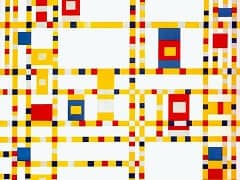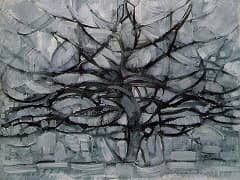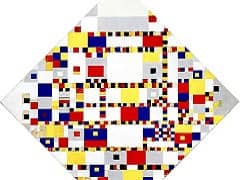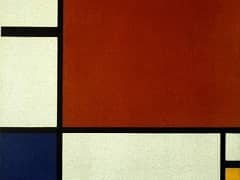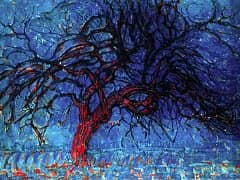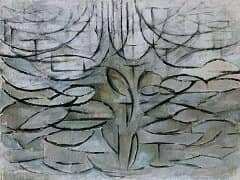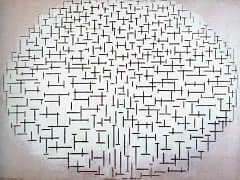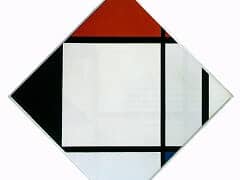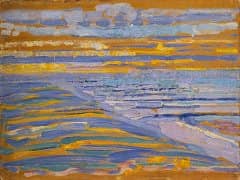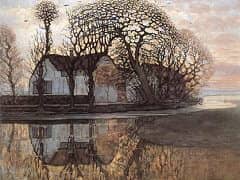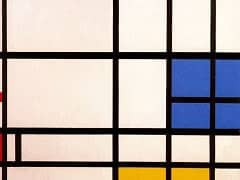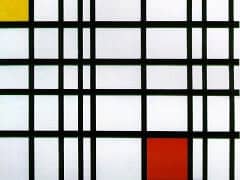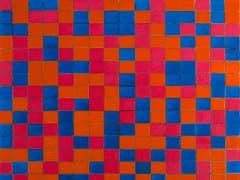Study for Blue Apple Tree, 1908 by Piet Mondrian
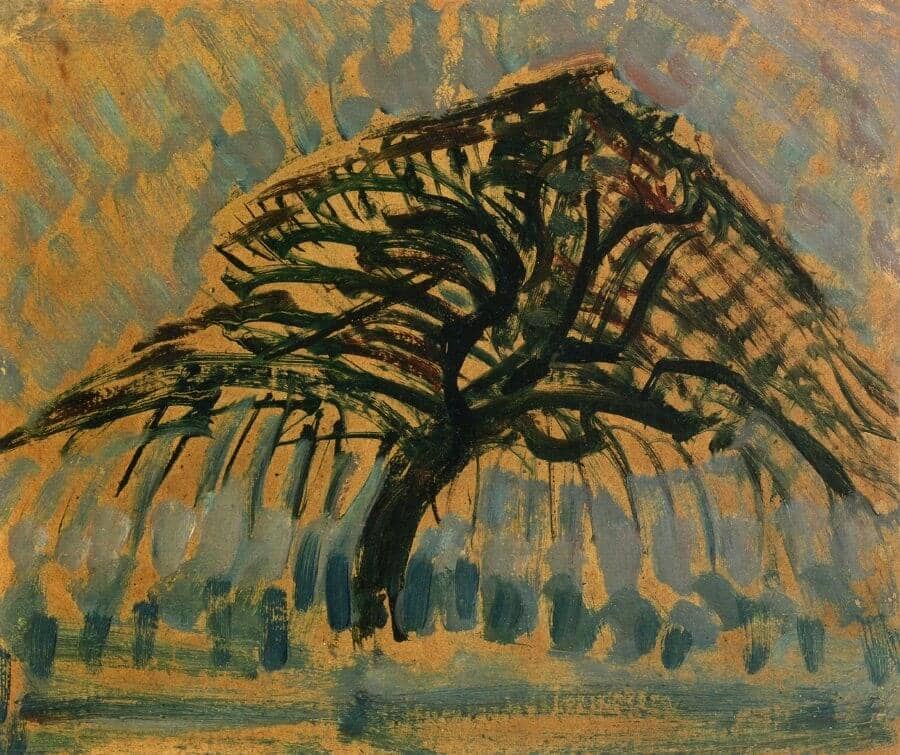
Mondrian was in search of space based on a relationship between opposing entities because he felt in his heart the contrast between the virtually infinite manifold dimension of nature and the finite and individual human condition, between the physical space of the external world stretching away beyond the horizons of sight (especially in the Netherlands) and the mental space internally developed by the human subject; the contrast between expansion and concentration, matter and spirit, multiplicity and unity.
The entire existence of human beings is marked by the search for equilibrium and synthesis between contradictory drives.
Mondrian was a great painter capable of transforming the surface of the canvas into a precious artifact as regards richness of texture, combinations of color, and dynamic balancing of the composition. It is essential to see the original works in order to appreciate all their beauty. His aim in painting those landscapes and buildings was not, however, solely to reproduce the fleeting appearance of things. The artist read and interpreted those objects as plastic symbols of a deeper reality, as visual metaphors of existential meanings.
During the expressionist period Mondrian's eye addressed the objects and situations of the external world but pulsated with a wholly internal rhythm.
While horizontal extension predominates in the landscapes and vertical development in the buildings, the two opposing directions interpenetrate in the figure of a single tree which is another recurrent motif of this period.

